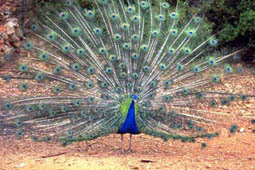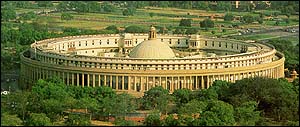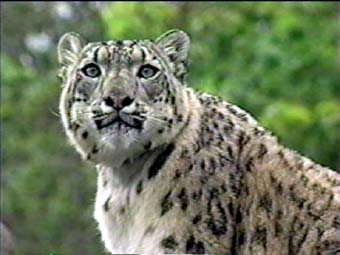
|

|

|

|

|

|

|
Animals and Animal Sanctuaries
India is the home of hundreds of species of mammals, reptiles, and thousands of birds. The
varied climate and landscape make it an ideal place for the wildlife. The rivers and the dense forests
of the western Ghats add to the ecosystem, encouraging further growth.
To protect this national treasure, India has many wildlife sanctuaries and protection laws. Currently,
there are about 80 national parks and 441 sactuaries. One
of the most famous of these is Project Tiger, intended to protect the Bengal tiger--India's national
animal. But there are others, throughout the country, each showcasing the animals unique to that
region.

National Parks and Sanctuaries:   
|

The Snow Leopard:
The Snow Leopard is white or smokey-gray with yellow and black patterns on the fur. It weighs
35-55 kilograms and is usually 60 centimeters tall at the shoulder. The Snow Leopard's large
paws and long hind limbs give them agility in the snow and mountains, and a well-developed chest
help adapt to mountain air.
|

Indian Rhinoceros:
There are about 3,000 Indian rhinos in the wild today. Unlike some other rhinos, Indian
species have only 1 horn. They can weigh anywhere from 750 to 8,000 pounds and live up to 35 years.
Rhinos are herbivores; they do not eat other animals. Instead, most eat the leaves of trees and bushes.
They are solitary creatures, prefering to mark out their own territory and remain alone.
|

Elephants:
Elephants are intelligent herbivore animals that live in family groups. The Indian (or Asian) elephant is
smaller than the African, but it is still huge. They are
about 8 feet tall and weigh up to 6 tons! Only some of the males have tusks. Their trunks are used to get
water and food, as well as for breathing.
|


To top of page
The creator of this site would like to thank:The World Wildlife Federation Internation for wonderful information on so many animals
eIndia Tourism.com in Delhi for information on India's many wildlife parks and sanctuaries (http://www.eindiatourism.com)